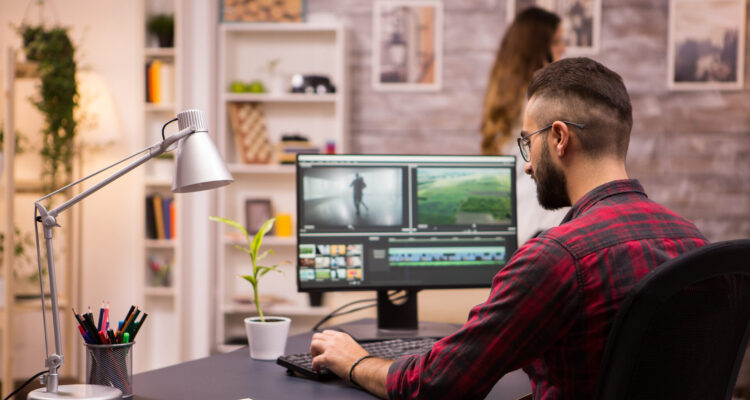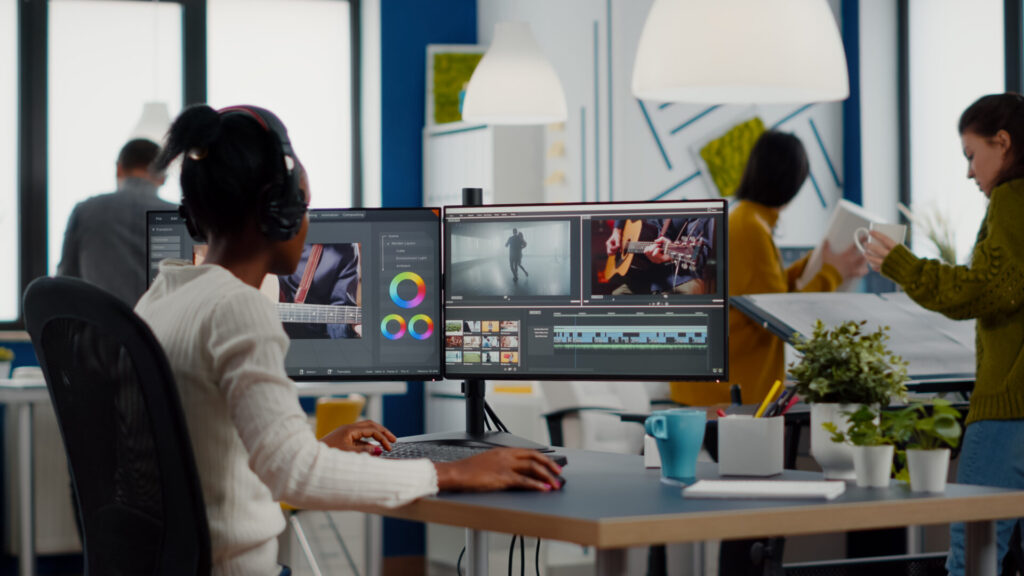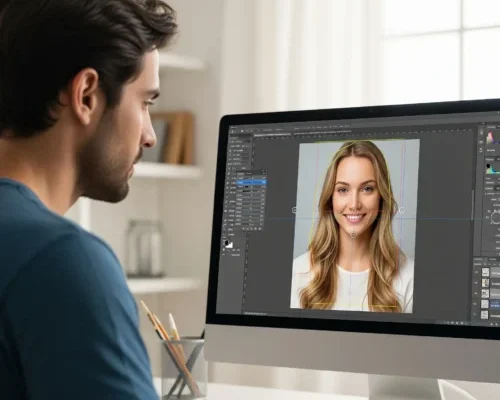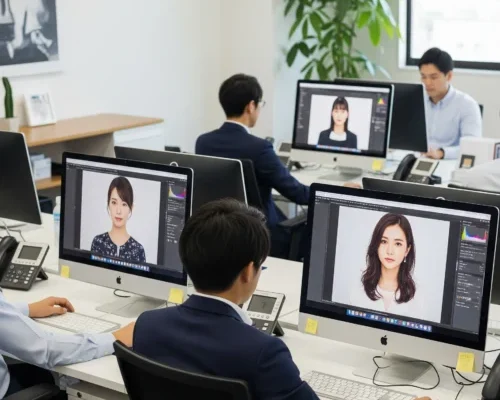In today’s online market, first impressions happen fast, and they usually start with a photo…

Photo Editing tips for Studio Photographers
Photo editing is a crucial aspect of studio photography, and it’s a skill that every studio photographer needs to master. In this article, we’ll explore some essential tips for photo editing for studio photographers, from basic techniques to advanced tools and tricks.
Understanding the Basics of Photo Editing
Before diving into the tips and tricks, let’s first understand the basics of photo editing. Photo editing is the process of manipulating and enhancing images to improve their overall quality. This includes adjusting color, brightness, contrast, and other settings to create the desired effect.
Getting a handle on these basic parameters is crucial for setting the foundation of your image before adding more complex edits. It’s the groundwork upon which all your creative adjustments will build, ensuring that the final product is both visually stunning and technically sound.
Photo editing can be done using various software programs, such as Adobe Photoshop, Lightroom, or GIMP. These programs offer a wide range of tools and features that allow photographers to make precise edits to their images. Understanding the strengths of each program can help you choose the right one for your specific needs.
Familiarize Yourself with Editing Software

If you’re new to photo editing, it’s essential to familiarize yourself with the software you’ll be using. Take some time to explore the different tools and features available and practice using them on different images. Many software programs offer tutorials and guides that can be extremely helpful for beginners.
Knowing your way around the software will make the editing process much more efficient and help you achieve the desired results. Investing time in learning shortcuts and advanced features can also dramatically speed up your workflow, allowing you to focus more on the creative aspects of editing.
Start with Basic Adjustments
When editing your images, it’s best to start with basic adjustments such as brightness, contrast, and color. These adjustments can make a significant impact on the overall quality of your image and can be easily done using the software’s basic tools.
You can experiment with different settings until you achieve the desired effect. Remember, it’s always better to start with subtle changes and gradually increase the adjustments as needed. Over-editing can lead to unnatural-looking images, so it’s important to keep an eye on maintaining realism while enhancing your photos.
Use Layers for More Precise Editing
Layers are an essential feature in photo editing software, and they allow you to make more precise edits to your images. By creating a new layer, you can make edits without affecting the original image, giving you the flexibility to make changes and experiment without damaging your original file.
Additionally, using layers makes it easier to go back and undo any changes if needed. It also allows you to make specific adjustments to specific areas of your image without affecting the rest of the image. Learning to effectively manage and organize layers can greatly enhance the complexity and quality of your edits.
Advanced Tips for Photo Editing

Once you’re comfortable with the basics, you can move on to more advanced editing techniques to take your images to the next level. Advanced techniques can include anything from detailed retouching to composite image creation, which can add a unique flair or completely alter the narrative of your photographs.
Use Adjustment Layers for Non-Destructive Editing
Adjustment layers are a powerful tool in photo editing software that allows you to make changes to your images without affecting the original file. Unlike regular layers, adjustment layers apply changes to all the layers below it, making it easier to make changes to your entire image at once.
Adjustment layers also allow you to go back and make changes to your edits at any time, making them a valuable tool for non-destructive editing. This flexibility is particularly important when working on complex edits that may require numerous revisions to achieve the perfect look.
Make Use of Filters and Presets
Filters and presets are pre-made edits that you can apply to your images with just a few clicks. These tools can save you a lot of time and effort, especially when editing a large number of images.
Most photo editing software comes with a wide range of filters and presets, and you can also purchase or download third-party presets for even more options. You can also create your own presets to use on future projects. Custom presets can help maintain consistency across your work and can be a vital part of establishing your unique photographic style.
Use Clipping Masks for More Control
Clipping masks are another useful feature in photo editing software that allows you to control the visibility of certain layers. By using a clipping mask, you can hide parts of a layer or reveal it only in specific areas, giving you more control over your edits.
This technique is particularly useful when working with multiple layers and trying to achieve a specific effect in a specific area of your image. Clipping masks can be used for a variety of creative purposes, such as selectively coloring an image or blending multiple images together seamlessly.
Outsourcing Your Photo Editing
While mastering photo editing and learning tips for photo editing is essential for studio photographers, it’s not always feasible to do all the editing yourself. As a busy photographer, you may not have the time or resources to edit all your images, especially during busy periods.
Fortunately, you can outsource your photo editing to a professional photo editing company. These companies have a team of skilled photo editors who can handle all your editing needs, from basic adjustments to advanced techniques.
Outsourcing your photo editing can save you time, allowing you to focus on other aspects of your business. It can also ensure that your images are edited to the highest quality, giving you peace of mind and satisfied clients. Moreover, professional editors can bring a new perspective to your work, potentially enhancing your images in ways you might not have considered.
Best Practices and Tips for Photo Editing

To ensure that your photo editing process is as efficient and effective as possible, here are some best practices to keep in mind.
Use High-Quality Editing Software
When it comes to photo editing, the software you use is crucial. Make sure to invest in high-quality editing software that offers a wide range of tools and features. This will make the editing process much more efficient and help you achieve professional-quality results.
High-quality software also tends to have better support and updates, which can be critical for maintaining a smooth editing process and staying up-to-date with the latest editing trends and techniques.
Develop a Consistent Style
Creating a consistent style for your images is essential, especially if you’re working with clients. A consistent style will make your images recognizable and help establish your brand as a photographer. By incorporating tips for photo editing, you can achieve this uniformity and refine your signature look. It will also make it easier for you to edit images consistently, saving you time and effort.
A well-developed style can set you apart from other photographers and can become a signature aspect of your work. Clients often look for photographers with a specific look or feel to their images, so honing your style can also be beneficial for attracting your ideal clientele.
Backup Your Work
While editing your images, make sure to save your work regularly and back it up on an external hard drive or cloud storage. This will ensure that your work is safe in case of computer malfunctions or other issues. Follow tips for photo editing to streamline your workflow and maintain the integrity of your files.
Regular backups are a critical habit for any digital professional. Data loss can be catastrophic, but regular backups can mitigate this risk and give you peace of mind as you work on your projects.
Conclusion
Photo editing is a crucial aspect of studio photography, and by mastering this skill and learning tips for photo editing, you can transform your images into stunning works of art. By understanding the basics, using advanced techniques, and following best practices, you can achieve professional-quality results that will impress your clients and elevate your photography business. And if you find yourself too busy to edit all your images, don’t hesitate to outsource to a professional photo editing company for efficient and high-quality results.



